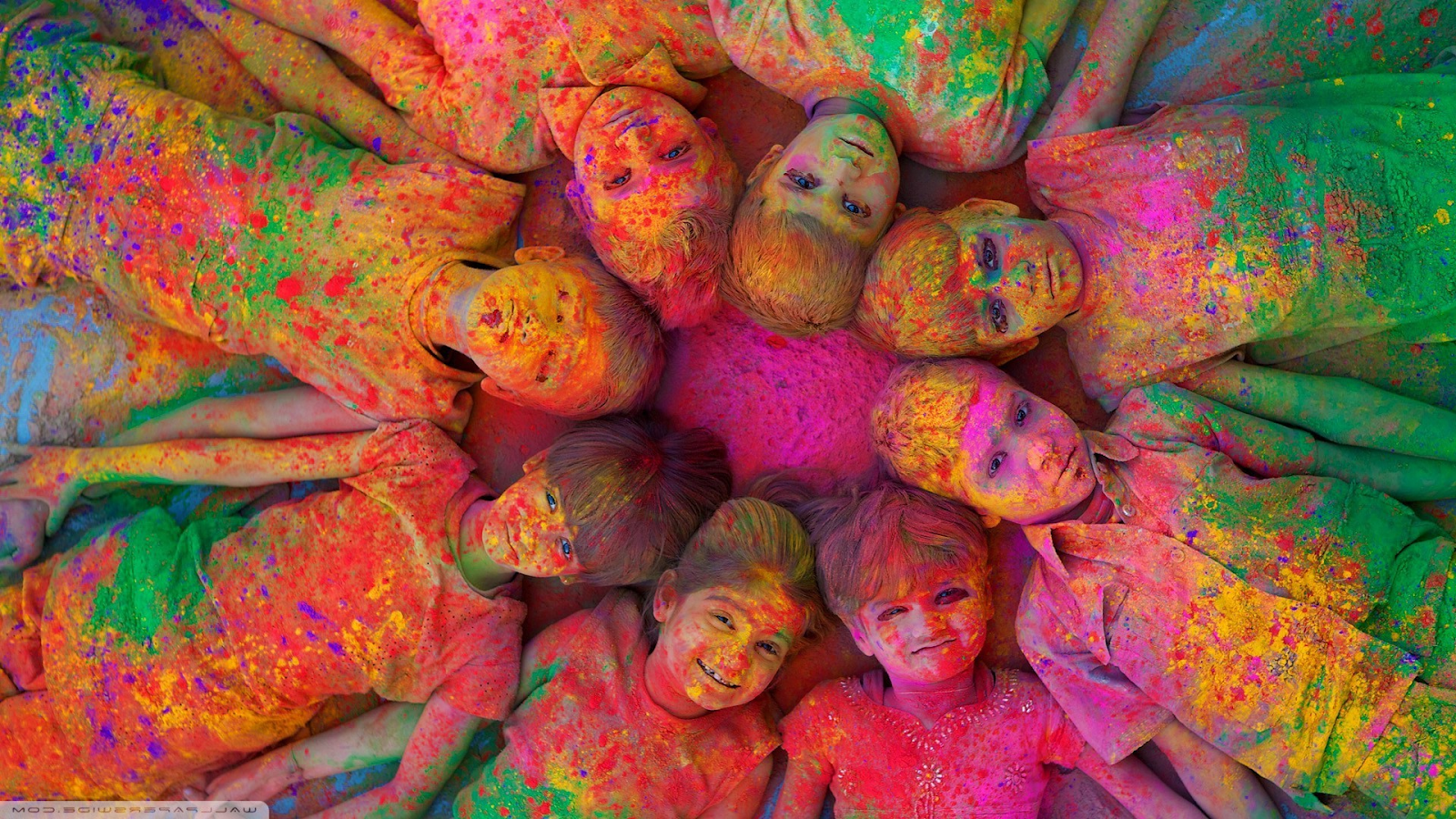
Holi, the eagerly anticipated Hindu festival, bursts forth each spring as a vibrant celebration of colors, love, and the triumph of good over evil. This joyous occasion, also known as the “festival of colors,” transcends social barriers, uniting people in a kaleidoscope of hues and infectious laughter. Celebrated with immense enthusiasm across India and Nepal, and increasingly embraced globally, Holi is a sensory spectacle that embodies the spirit of renewal and strengthens community bonds. This article delves into the rich history, traditions, and significance of this iconic festival.
Unveiling the Mythological Roots of Holi
The origins of the Holi festival are deeply rooted in Hindu mythology, with compelling narratives shaping its significance. The most prominent legend centers on the tale of Holika and Prahlada. According to ancient scriptures, the tyrannical demon king Hiranyakashipu demanded universal worship. However, his devoted son, Prahlada, remained steadfast in his faith towards Lord Vishnu. In a fit of rage, Hiranyakashipu conspired with his sister, Holika, who possessed immunity to fire, to eliminate Prahlada. They planned to burn him alive on a pyre. Miraculously, Prahlada’s unwavering devotion protected him, while Holika was consumed by the flames. This pivotal event, commemorated by the tradition of the Holika Dahan (bonfire) on the eve of Holi, symbolizes the victory of virtue over vice and the destruction of negativity.

Another compelling legend associated with Holi celebrations is the playful romance between Lord Krishna and Radha. Folklore suggests that Krishna, known for his dark complexion, was often teased by Radha and his companions about his skin tone. To playfully address this, Krishna’s mother advised him to color Radha’s face. This lighthearted anecdote is believed to be the genesis of the cherished tradition of playfully smearing colors on loved ones during Holi. The vibrant hues used in the Holi color play are also symbolic of the diverse shades of love and the blossoming beauty of spring. The playful interactions between Radha and Krishna are often reenacted in regions like Mathura and Vrindavan, the heartland of their legendary love.
Rituals and Traditions: Embracing the Spirit of Holi
The core of Holi traditions lies in the exhilarating and symbolic color play. On the day following Holika Dahan, people of all ages and backgrounds converge in streets, parks, and courtyards to immerse themselves in a vibrant spectacle of colors. Dry powdered pigments, known as gulal and abeer, along with water-based colors, are joyfully applied to faces, tossed into the air, and sprayed using water guns (pichkaris). The atmosphere resonates with infectious laughter, lively music, and the rhythmic beats of traditional drums. Social barriers dissolve as participants engage in this collective expression of joy and camaraderie. Traditionally, these Holi colors held symbolic meanings, with red representing love and fertility, yellow symbolizing auspiciousness and turmeric, blue representing Lord Krishna, and green signifying spring and new beginnings. While natural dyes derived from plants and minerals were historically used, synthetic colors have become more common. However, there is a growing movement advocating for the use of eco-friendly and natural colors for safety and environmental sustainability.
Beyond the vibrant Holi color celebration, the festival is also a time for indulging in traditional delicacies, exchanging sweets, and fostering familial and social connections. Special dishes such as gujiya (sweet dumplings), mathri (savory crackers), dahi bhalle (lentil fritters in yogurt), and various regional culinary delights are prepared and shared. The spirit of togetherness and forgiveness permeates the air as people embrace, extend warm wishes for a happy Holi, and often mend strained relationships, embracing a fresh start.
Regional Variations in Holi Celebrations Across India and Nepal
While the fundamental spirit of Holi remains consistent, the celebrations exhibit fascinating regional variations across India and Nepal, highlighting the rich cultural tapestry of these nations. At Barsana and Nandgaon, the legendary homes of Radha and Krishna, the unique tradition of Lathmar Holi takes center stage, where women playfully strike men with sticks (lathis) while the men attempt to defend themselves with shields. Whereas, in West Bengal, Holi is observed as Dol Purnima, a more serene festival characterized by processions of beautifully adorned idols of Radha and Krishna on palanquins, accompanied by devotional songs and dances.

In Nepal, Holi, known as Fagu Purnima, is celebrated with similar fervor, with the iconic throwing of colored water balloons being a prominent feature, particularly in the Kathmandu Valley. These diverse Holi celebrations underscore the unifying power of the festival while showcasing regional cultural nuances.
The Underlying Significance of the Spring Festival
Beyond its religious and mythological significance, Holi also marks the arrival of spring, a season of renewal and rebirth. The vibrant colors mirror the blossoming flowers and the rejuvenation of nature after the winter months. This alignment with the changing seasons adds another layer of meaning to the spring festival, symbolizing hope, new beginnings, and the vibrancy of life.
Holi’s Global Appeal and Modern Interpretations

In recent years, the infectious joy and vibrant energy of Holi have transcended geographical boundaries, captivating people worldwide. Holi parties and celebrations are now a common sight in numerous countries, offering a glimpse into the rich cultural heritage of India and Nepal. This growing global recognition underscores the universal appeal of Holi’s core message – a celebration of joy, love, unity, and the eternal triumph of good over evil. Modern interpretations of Holi often emphasize inclusivity, environmental consciousness, and the fostering of community spirit.
Conclusion: Embracing the Colors of Unity and Joy
In conclusion, Holi is far more than just a festival of colors; it is a profound cultural and religious event that embodies the spirit of joy, love, unity, and the victory of good over evil. This vibrant Hindu festival marks the arrival of spring and provides an opportunity for people to shed inhibitions, strengthen bonds, and celebrate the richness and diversity of life. As the echoes of laughter and the vibrant hues of Holi celebrations fade away, the spirit of renewal and togetherness lingers, leaving an indelible mark on the hearts of all who participate in its joyous embrace.


